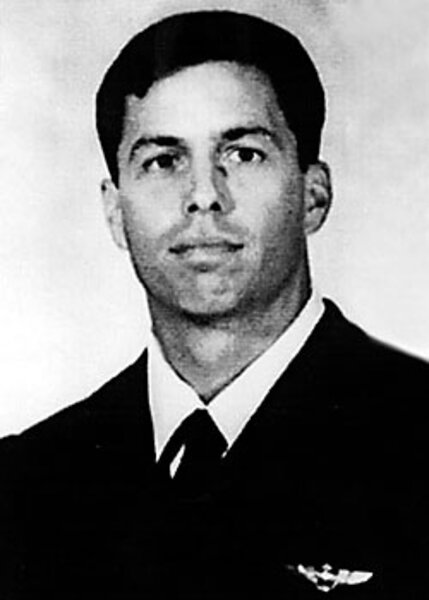Remains of first US Gulf War casualty solve 18 year mystery
Loading...
| Washington
The confirmation Sunday that remains found in Iraq are those of Capt. Michael "Scott" Speicher – the first American casualty of the 1991 Gulf War – ends a veritable saga punctuated with hope, uncertainty, and despair for the past 18 years. The mystery befuddled the military and even led to rumors of unconfirmed sightings.
On a tip from an Iraqi citizen last month, American marines went to a location in Anbar province near where Speicher's F/A-18 Hornet jet crashed in January 1991. The man had heard secondhand that nomadic Bedouins had found Speicher's body in 1991 and buried it.
Over the course of several days, remains of a body were found and sent to Dover Air Force Base in the US, where the medical examiner there used forensic information to determine that the remains were Speicher's.
The evidence concluded the improbable story of the naval aviator who had flown some of the first air strikes of the first Gulf War.
"Our Navy will never give up looking for a shipmate, regardless of how long or how difficult that search may be," said Adm. Gary Roughead, chief of naval operations, in a statement. "We owe a tremendous debt of gratitude to Captain Speicher and his family for the sacrifice they have made for our nation and the example of strength they have set for all of us."
The difficulty in finding Speicher's remains – despite the overwhelming US presence in Iraq since 2003 – is a function of Bedouin culture.
"These Bedouins roam around in the desert, they don't stay in one place, and it just took this time to find the specific site," says Sen. Bill Nelson (D) of Florida, who had pushed the Pentagon to find Speicher.
After his plane crashed, Speicher had been termed "missing in action" by the Pentagon and ultimately declared "killed in action" and given a tomb in Arlington cemetery. That status was reconfirmed after an exhaustive search of the crash site four years later in 1995.
In 2001, after a CIA investigation showed he may have survived by ejecting from his plane before it crashed, the Pentagon changed his status back to "missing in action," reportedly the only time the department has ever made such a change.
Then, at the urging of Congress, the Pentagon changed his status a third time – to "missing-captured" – raising expectations that he might be found alive. News reports at the time had indicated that he might have survived the crash and been taken from the desert.
The invasion of Iraq in 2003 brought new hope that the American military would find him, and public fascination with his case grew as various reports fueled speculation about his whereabouts and condition.
As the US military slowly brought Anbar province – the region where he crashed – under control, it became increasingly clear that the pilot probably wasn't ever captured. But questions remained.
Speicher's former wife had remarried a close friend of the aviator, Buddy Harris, who had told reporters years ago that he remained confident that information would turn up.
Senator Nelson, who was informed Saturday night by Roughead, spoke with the Speicher family Sunday morning.
"They were very grateful that the [Defense Department] stayed with this and that they can bring closure for their children," Nelson said.
Nelson had traveled to Iraq shortly after the invasion to a prison thought to have housed Speicher. He remembers visiting a cell in which the initials "MSS" were carved into the wall, one of many pieces of "proof" that kept hope alive over the years.
A final report is expected from the Pentagon in coming weeks.
-----
Follow us on Twitter.





